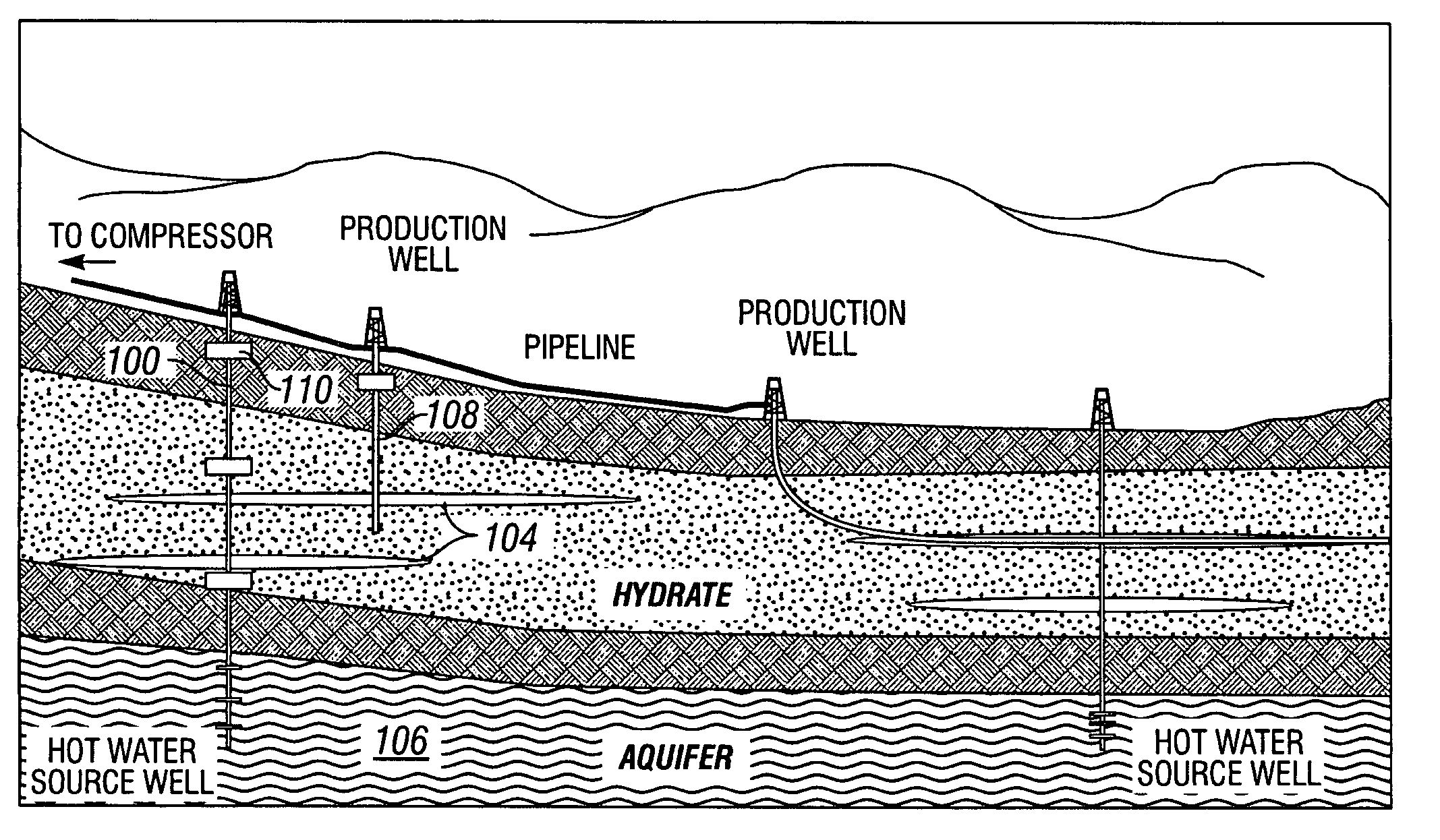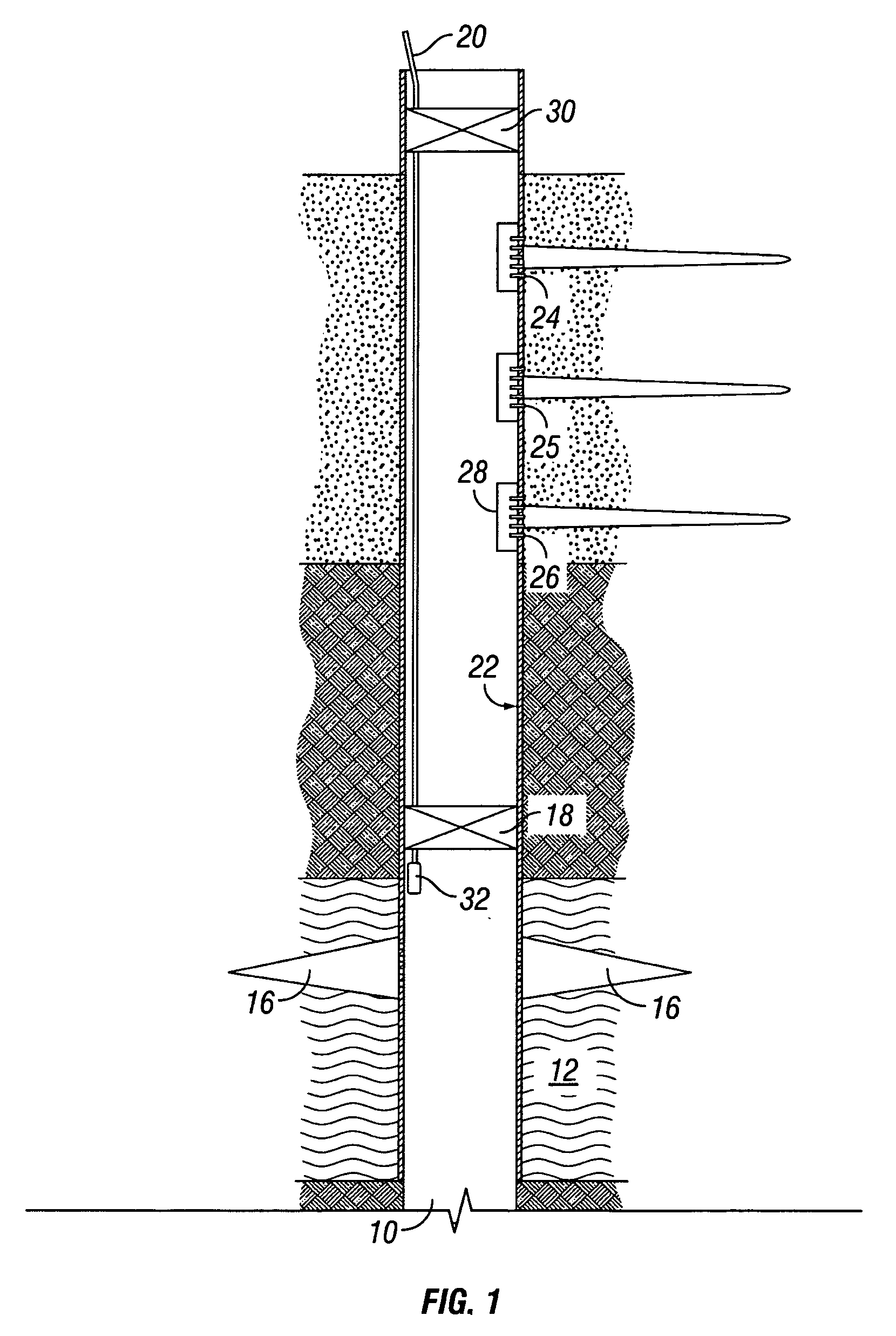Method for exploitation of gas hydrates
a technology of gas hydrate and hydrate, which is applied in the direction of survey, wellbore/well accessories, insulation, etc., can solve the problem of hydrate itself dilution in sediment, and achieve the effect of enhancing the production process and preventing methane leakage to the atmospher
- Summary
- Abstract
- Description
- Claims
- Application Information
AI Technical Summary
Benefits of technology
Problems solved by technology
Method used
Image
Examples
Embodiment Construction
[0015]The present invention is a method for producing gas from gas hydrate formations using relatively warmer water from an aquifer or other water-producing formation or zone below the hydrate formation.
[0016]FIG. 1 shows a first embodiment of the invention, wherein a single cased wellbore 10 is used to produce water from an aquifer 12 or other water-producing formation or zone and to produce gas generated from a gas hydrate formation 14. The wellbore extends through the gas hydrate formation and into the aquifer. Said aquifer is preferably located or positioned substantially below (i.e., deeper) than the hydrate formation. Depending on the specific features of the aquifer, it may be desirable to perform a stimulation operation to increase water output. This may involve hydraulic fracturing, acidizing or the like. Similarly, it may also be desirable to fracture the hydrate deposit prior to treatment with water from the aquifer. Where necessary, the aquifer water may be suitable pres...
PUM
 Login to View More
Login to View More Abstract
Description
Claims
Application Information
 Login to View More
Login to View More - R&D
- Intellectual Property
- Life Sciences
- Materials
- Tech Scout
- Unparalleled Data Quality
- Higher Quality Content
- 60% Fewer Hallucinations
Browse by: Latest US Patents, China's latest patents, Technical Efficacy Thesaurus, Application Domain, Technology Topic, Popular Technical Reports.
© 2025 PatSnap. All rights reserved.Legal|Privacy policy|Modern Slavery Act Transparency Statement|Sitemap|About US| Contact US: help@patsnap.com



